Lernahovit, a village in the northernmost region of Armenia, has been busy since the morning. Rima Karapetyan’s eldest granddaughter is getting married. She can hardly contain her emotions.

The granddaughter’s wedding was supposed to take place in her native village Hagorti in the Martuni region of Artsakh, where the groom is also from. Along with the entire population of Artsakh, Rima and her four children and 12 grandchildren were forcibly displaced as a result of the ethnic cleansing carried out by Azerbaijan last September.

During the first Artsakh war in the 1990s, Rima’s brother Seryozha and her husband Valery were killed. Valery was the first victim of the village, and Azerbaijani soldiers killed him with particular cruelty, setting his body on fire. Later, their fourth child was born. Rima raised her four children alone, gave them an education and married them off.
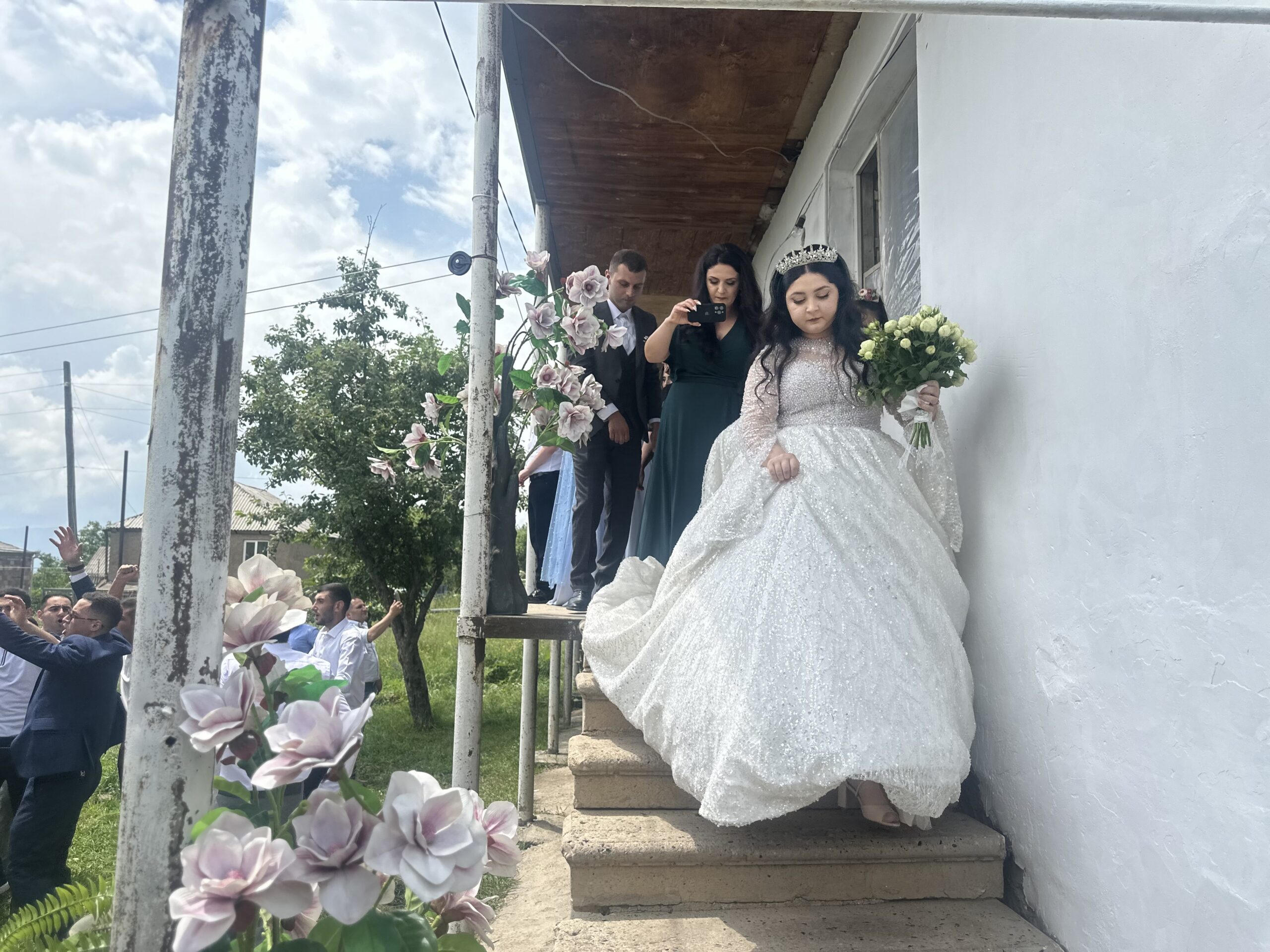
Before the arrival of the in-laws on the wedding day, Rima recalls her life in Hagorti, nestled on a bushy mountain slope in a corner of Artsakh. She left not only the house and her husband’s grave, but also a thousand-year-old tree, under which there was a place of worship where residents would make sacrifices. This is where the name of the village comes from: the word hagortel became Hagorti. They also left the Church of St. Astvatsatsin in the village. “I opened and closed the drawers. I didn’t know what to take with me. How can you put what you have created all your life in a suitcase?”
Rima remembers in detail every corner of the house and everything she left behind. “I opened and closed the drawers. I didn’t know what to take with me. How can you put what you have created all your life in a suitcase?” she said. She then takes out from a shelf of her new kitchen the pan with which she has baked bread all her life and a precious copper ladle given to her by her husband. She left behind a vegetable garden, where almost all the fruits and vegetables had been ripe — the wars came during the harvest. Yet even in that situation, she carefully collected the seeds sown in the garden, with which she hoped to recreate the taste of Artsakh in any part of the world. However, she left them at the last moment. “I didn’t even know if we would survive or not and in which part of the world we would end up,” she says with regret. She found shelter in Lernahovit, created a new vegetable garden and made pickles and jams.

Rima sings a blessing song to her granddaughter with infinite joy while knowing that this wedding is not taking place in Artsakh, in their village. The other granddaughter, the bride’s sister, is engaged to the groom’s brother. Rima is full of hope that her granddaughters Tatev and Arev, their grooms Gor and Yeghishe and their contemporaries will build the future.

When I ask her about returning to Artsakh, she says, “If everything is razed to the ground and there is only stone and soil in Artsakh, I will return barefoot and create it again, only if they are not there,” referring to the Azerbaijanis.
Before reaching Lernahovit, their big family took refuge in several places in Armenia: Zorakan, Sarchapet and Tsovagyugh. In the end, they settled on Lernahovit, which is in the Tashir community of the Lori region of Armenia. The community borders the Republic of Georgia to the north.
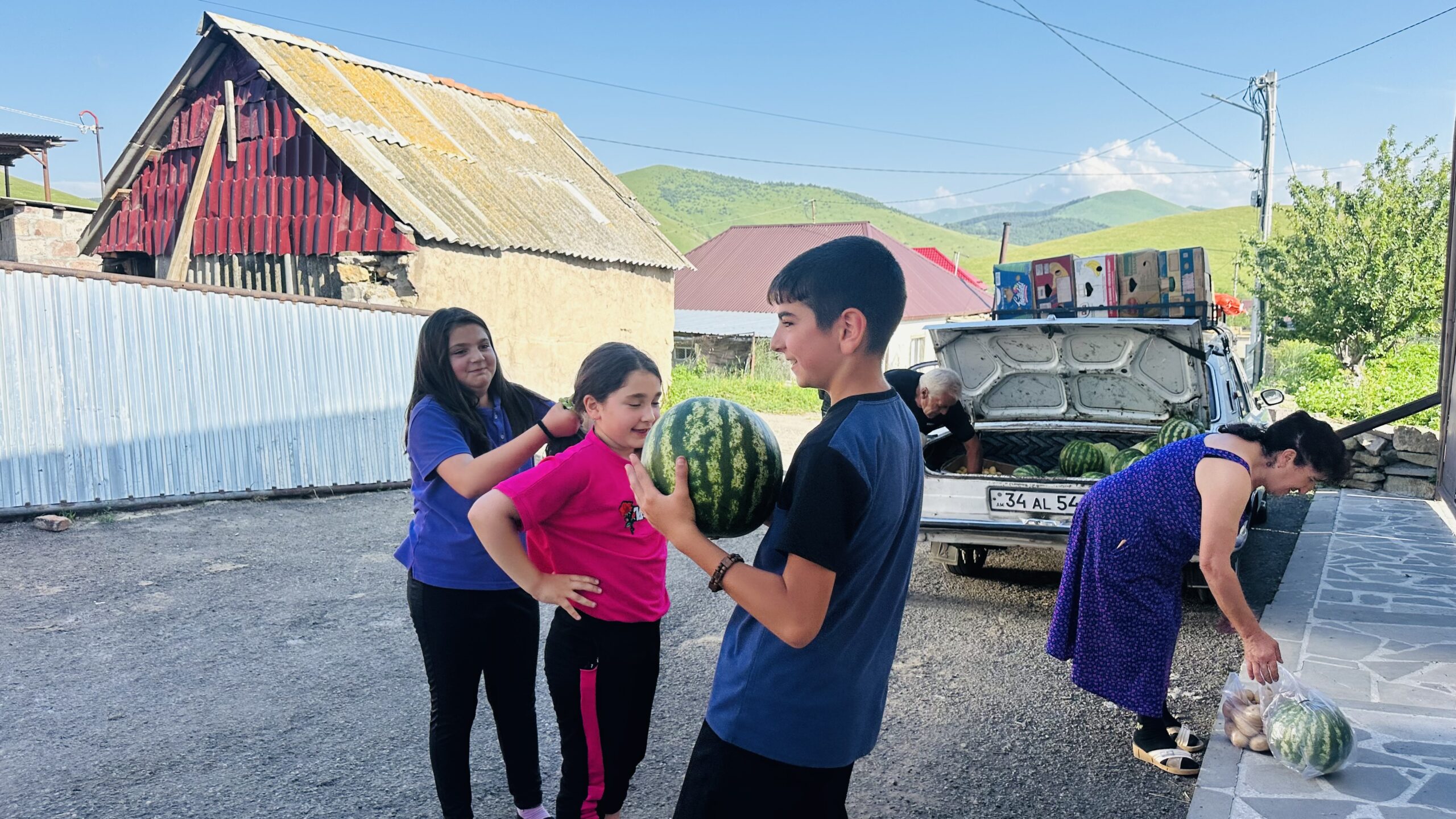
When I ask her about returning to Artsakh, she says, “If everything is razed to the ground and there is only stone and soil in Artsakh, I will return barefoot and create it again, only if they are not there,” referring to the Azerbaijanis.
Lernahovit is one of the largest Catholic communities in Armenia, founded in 1822-1823. The villagers were forcibly displaced from Mush and Erzerum. Its main occupations are animal husbandry and farming. Samvel Karapetyan, a Russian businessman and philanthropist, was born and raised in Lernahovit. For years, he has implemented many charitable projects not only in the village but also throughout Tashir.
This can be seen upon entering the village — asphalted streets, renovated crimson roofs, neat balconies, a renovated school and church, a community hall building and more. However, the charitable efforts have not been limited to Tashir and Armenia. Efforts by the “Tashir” charitable foundation to support the people of Artsakh have a long history. Back in Artsakh, within the program’s goals to promote and maintain Artsakh’s demographics, families received financial support from the fund for the fourth and every subsequent child born.
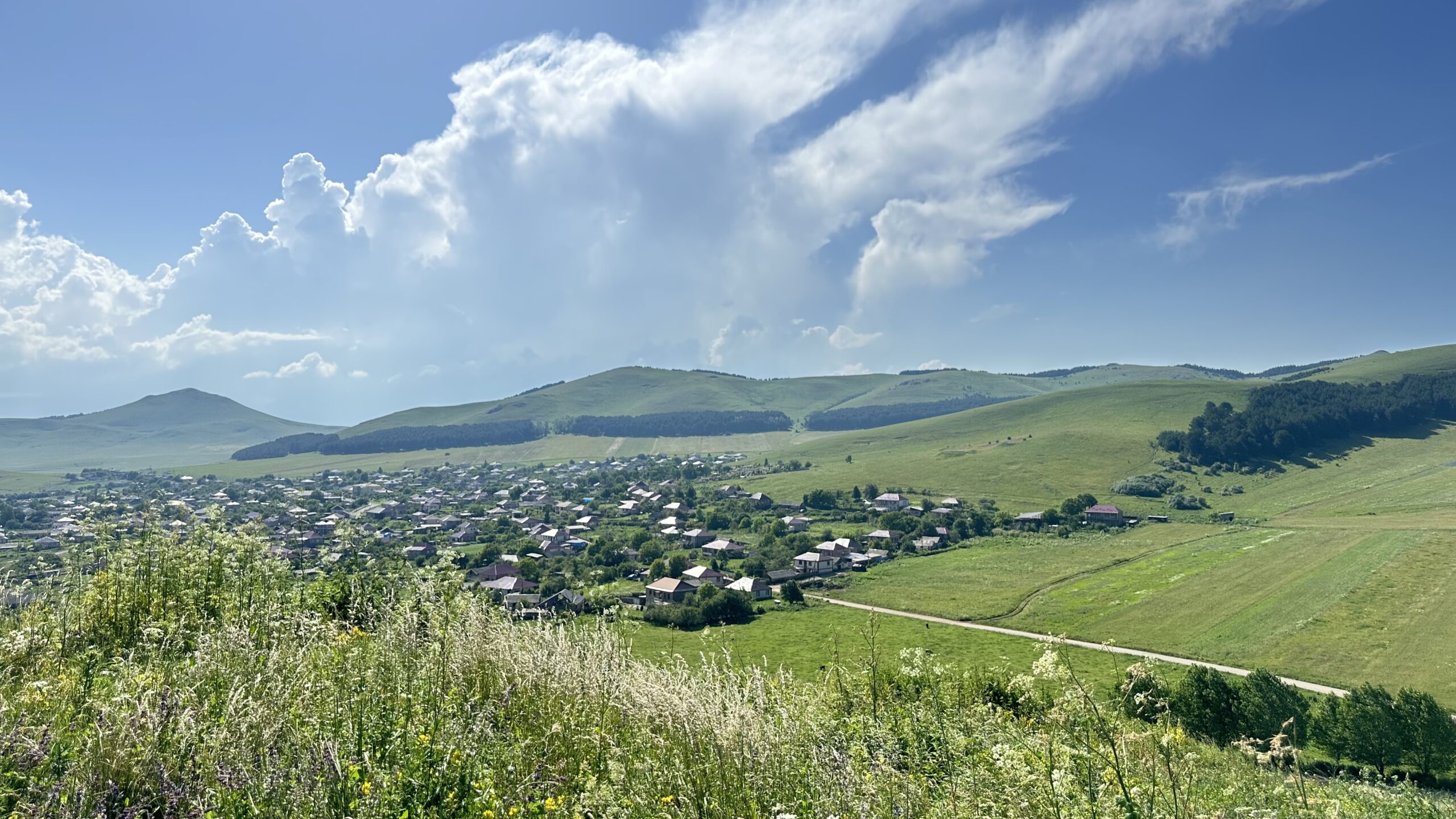
Millions of dollars were invested by the Karapetyans in the construction and repair of schools, cultural centers, churches, roads, parks, patronage of the arts, technical equipment for modern medical services and many other projects in Artsakh. It is no coincidence that at the very beginning of the deportation, the foundation announced that accommodations would be provided to 1,000 residents displaced from Artsakh in the Tashir community of Lori, and then to another 500 forcibly displaced individuals.
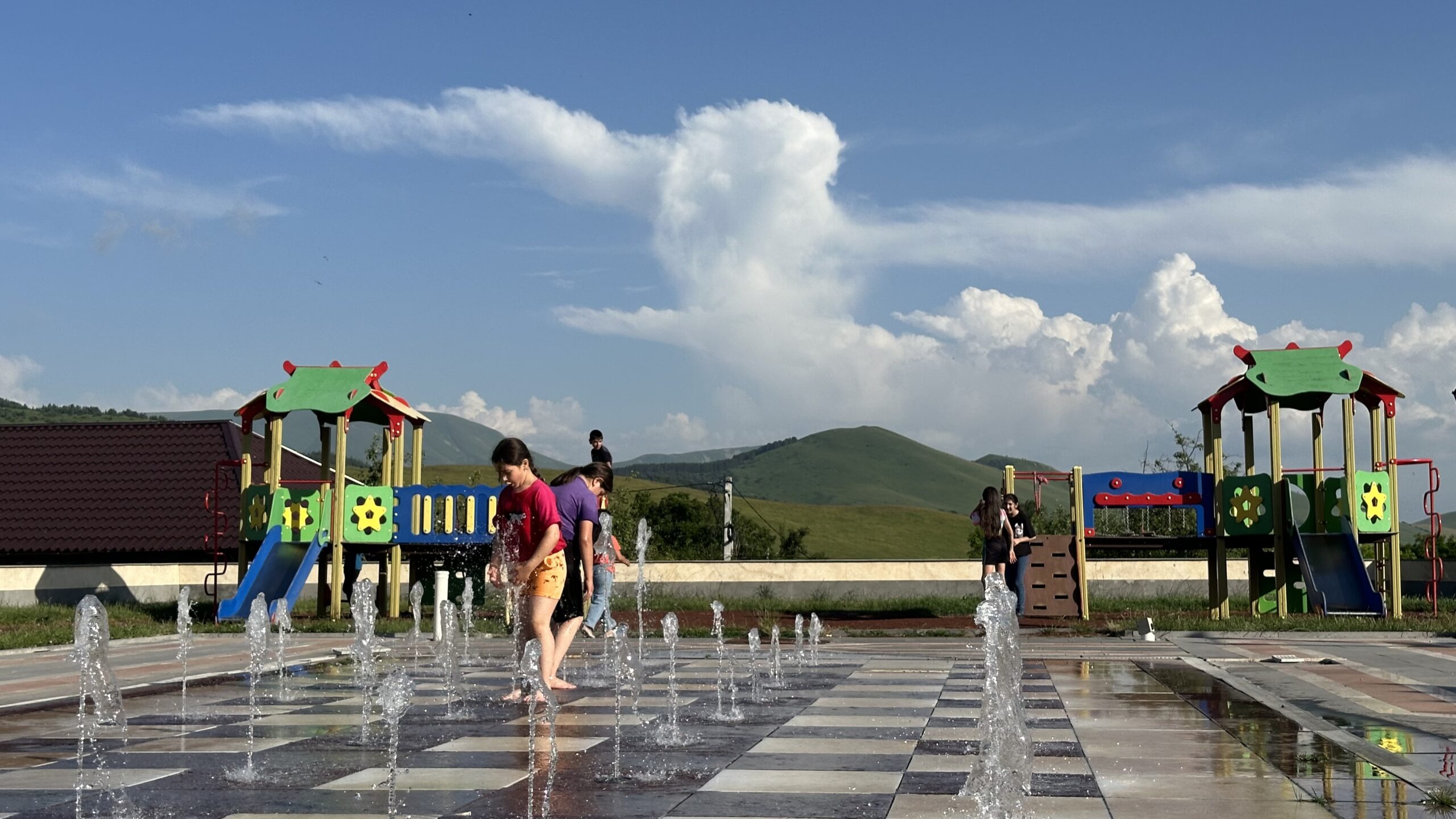
“When we learned that our compatriots were forced to leave Artsakh, the foundation immediately decided to accommodate them,” said Aleksan Aleksanyan, the representative of the “Tashir” fund. Thirty-eight families from Artsakh found shelter in Lernahovit alone. The total number of Artsakh residents settled in the villages of the Tashir community has reached almost 1,400. People who live outside of Armenia temporarily provided their houses to their compatriots from Artsakh through this initiative. Since those houses had not been inhabited for years, they were cosmetically repaired by the foundation, which also resolved the issue of hot water in many houses that had no bathrooms. The foundation has also supplied food to displaced families each month since September.
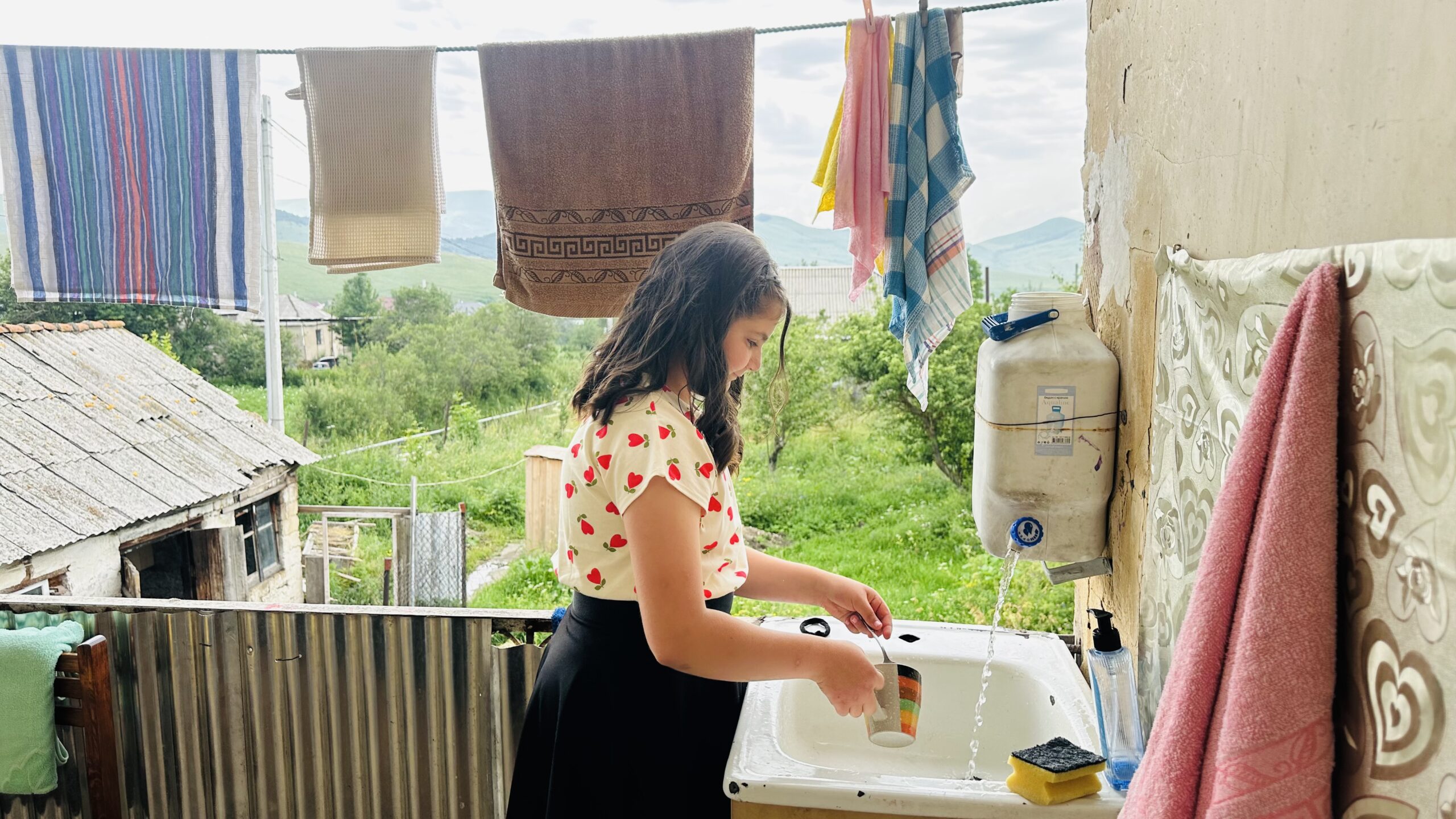
According to Aleksanyan, the fund is also trying to find jobs for the forcibly displaced people.
However, not all families have been provided with basic conditions.

Shahen and Diana Sahakyan used to live in the village of Machkalashen in the valley of the Amaras Monastic Complex before their forced displacement to Lernahovit. When I visited them, Diana had traveled to the neighboring town of Tashir to bathe her five children and wash clothes at a relative’s house. The house provided to them does not have a bathroom. Beds and some necessities were provided by the foundation, as well as monthly food. However, there are no ordinary chairs in the house. Aleksanyan said the fund will try to create better conditions for the Sahakyans.

The eldest daughter, Asia, has finished the ninth grade and wants to become a hairdresser. Adela dreams of cooking, while Anna vacillates between becoming a singer or a teacher. Volodya has not yet decided what he wants to be; he talks about his beloved cat and friends left behind in Machkalashen, from whom he has not heard. The youngest of the family, five-year-old Vahe, cannot speak, and since the village is remote, it is difficult for the family to get him to a specialist.

Using the 50,000 drams provided by the government, Shahen bought pigs and chickens to breed. He also cultivates a vegetable garden, mainly growing potatoes, which are well-suited to the cold climate of the area. In Machkalashen, they engaged in animal husbandry and cultivated vineyards.
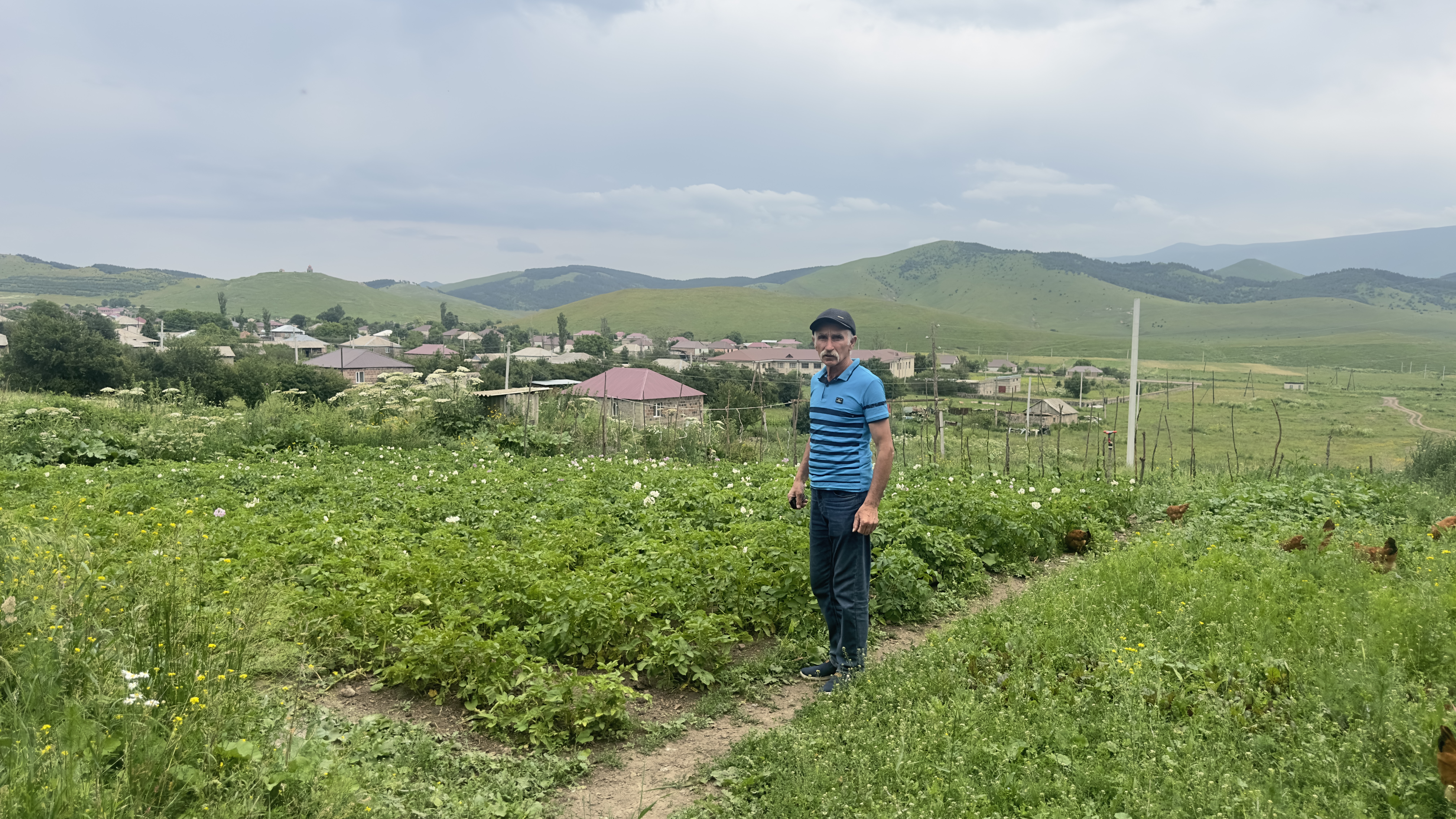
“We took a handful of clothes for the children and our documents, hoping that we would return, like during the 2020 war,” Diana says. Shahen did not want to leave the village. He says that all of the villagers tried to stay until the end; the soldiers assumed their positions, and the elderly men formed a defensive line around the village. In the process, he witnessed two fellow villagers get killed by a shell explosion right in their yard.
He also left his cows in the village. He wants to keep a cow in Lernahovit so that he has milk and cheese for the children, but there is no support program for that. With the money they have, the family somehow manages its daily worries. Shahen has high hopes for the Armenian government’s housing program. He hopes that they will finally have a house with all of the basic amenities and a plot of land where they can engage in agriculture and animal husbandry.




Be the first to comment